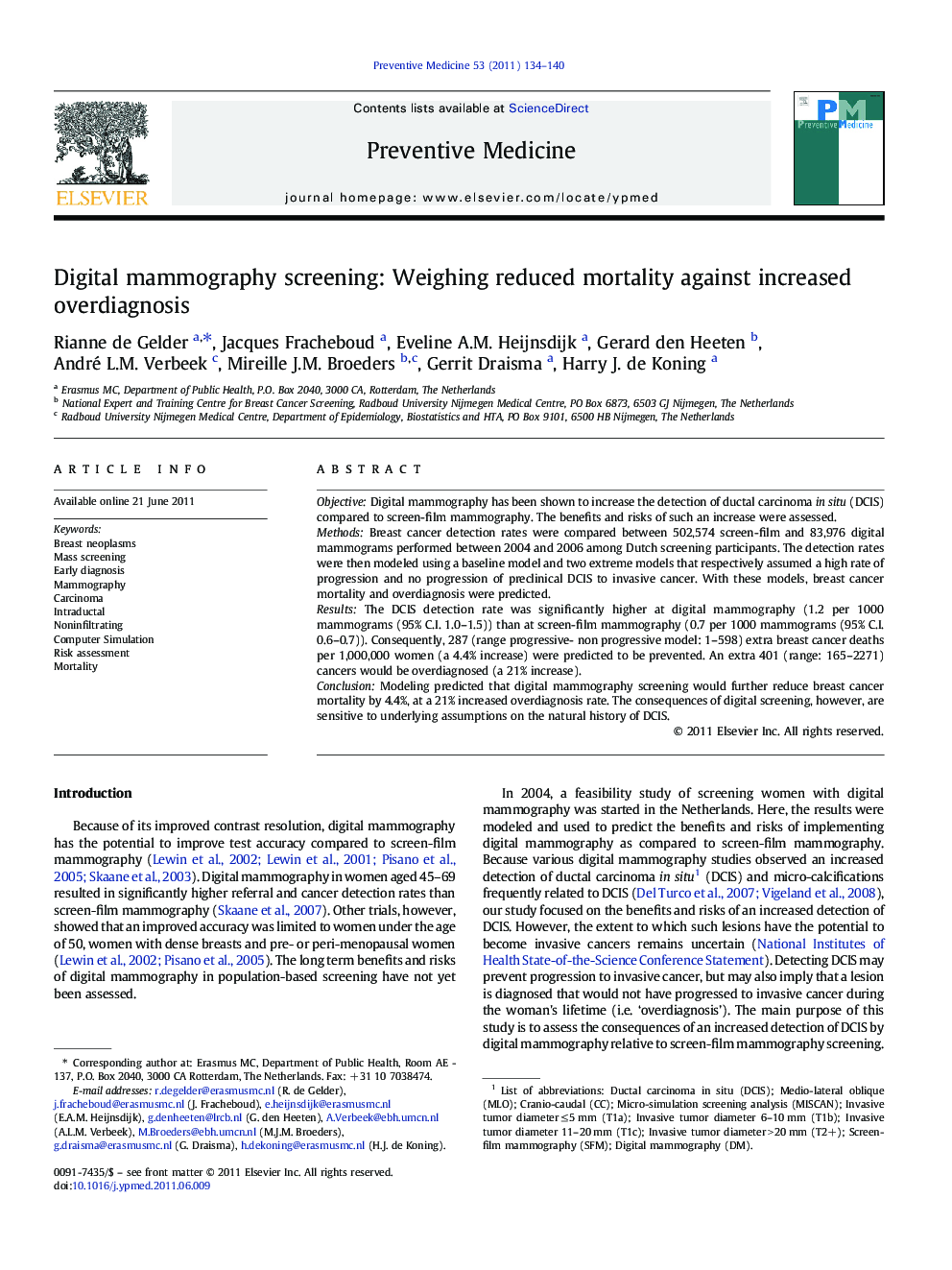| Article ID | Journal | Published Year | Pages | File Type |
|---|---|---|---|---|
| 3100732 | Preventive Medicine | 2011 | 7 Pages |
ObjectiveDigital mammography has been shown to increase the detection of ductal carcinoma in situ (DCIS) compared to screen-film mammography. The benefits and risks of such an increase were assessed.MethodsBreast cancer detection rates were compared between 502,574 screen-film and 83,976 digital mammograms performed between 2004 and 2006 among Dutch screening participants. The detection rates were then modeled using a baseline model and two extreme models that respectively assumed a high rate of progression and no progression of preclinical DCIS to invasive cancer. With these models, breast cancer mortality and overdiagnosis were predicted.ResultsThe DCIS detection rate was significantly higher at digital mammography (1.2 per 1000 mammograms (95% C.I. 1.0–1.5)) than at screen-film mammography (0.7 per 1000 mammograms (95% C.I. 0.6–0.7)). Consequently, 287 (range progressive- non progressive model: 1–598) extra breast cancer deaths per 1,000,000 women (a 4.4% increase) were predicted to be prevented. An extra 401 (range: 165–2271) cancers would be overdiagnosed (a 21% increase).ConclusionModeling predicted that digital mammography screening would further reduce breast cancer mortality by 4.4%, at a 21% increased overdiagnosis rate. The consequences of digital screening, however, are sensitive to underlying assumptions on the natural history of DCIS.
► Digital mammography significantly increases the detection of DCIS by 80%. ► The increased detection of DCIS may prevent 4.4% extra breast cancer deaths. ► The increased detection of DCIS may raise the overdiagnosis rate by 21%.
